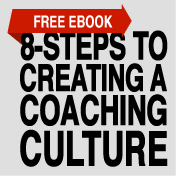Everyone knows that listening is important—especially in sales. But what do you listen for? You listen for the gap. Only after identifying the gap will you know how to help your customers get to where they want to be, even if they can’t see it on their own.

Excerpt from The Complete Idiot’s Guide to Closing the Sale by Keith Rosen. Reprinted with permission by Alpha Books, a member of Penguin Group (USA) Inc. Released January, 2007.
When you are listening to a prospect, what exactly are you listening for? For one, you certainly want to listen for what is missing or the gap. After all, this is what you are ultimately presenting to them, that is, your solution which in turn, fills their void, gap or problem. So sell the gap! It is your solution, product or service that becomes the bridge which takes the prospect from where they are today (present state) to where they want to be (desired state).
Keep in mind, this can be different from what they want or need. This is something that the client themselves may not even be aware of. If you can identify this gap, you can then bridge it with the right solution.
For example, a client of mine hired me to train their sales team. As I explored deeper, I discovered that they were experiencing a large amount of turnover. There were many inconsistencies and breakdowns during their recruiting and hiring process. There was nothing documented as it relates to a process that people can follow consistently to attract the best talent. Especially when it came to screening candidates and a strong retention plan to retain their new hires.
I found that they were experiencing a 35% attrition rate. I proposed not only providing them with a sales training program, but also a more in depth solution to developing and strengthening their recruiting and retention strategy to reduce the amount of attrition which would complement the training.
The result was a comprehensive recruitment and retention strategy which ultimately reduced turnover within their company dramatically. That was the gap that I was able to fill. Simply by listening deeper, I was able to uncover what their true needs were, were the breakdown was beginning, what their core challenges were. The same challenges that they did not articulate on the surface. It was what they weren’t saying that I listened for. Their needs and greatest point of pain.
There’s a symbiotic relationship between the way we listen, and the questions we ask. For example, if you’re “already” listening from a certain place or through a filter, then chances are you are not going to ask certain questions that can create new selling opportunities. The real cost here is, salespeople then wind up filling in all the data and facts with costly assumptions which are for the most part, all based upon their experiences! And if they don’t ask new and better questions to validate or invalidate the assumptions they make, you can bet that your competition will. As such, this salesperson will continue being mired in mediocrity, losing out on the opportunity to uncover and bring in more business.
After all, if you keep listening from the past and reacting based on a past experience or a future expectation, you will continue to create the same results as before.
Photo credit: x-ray delta one



